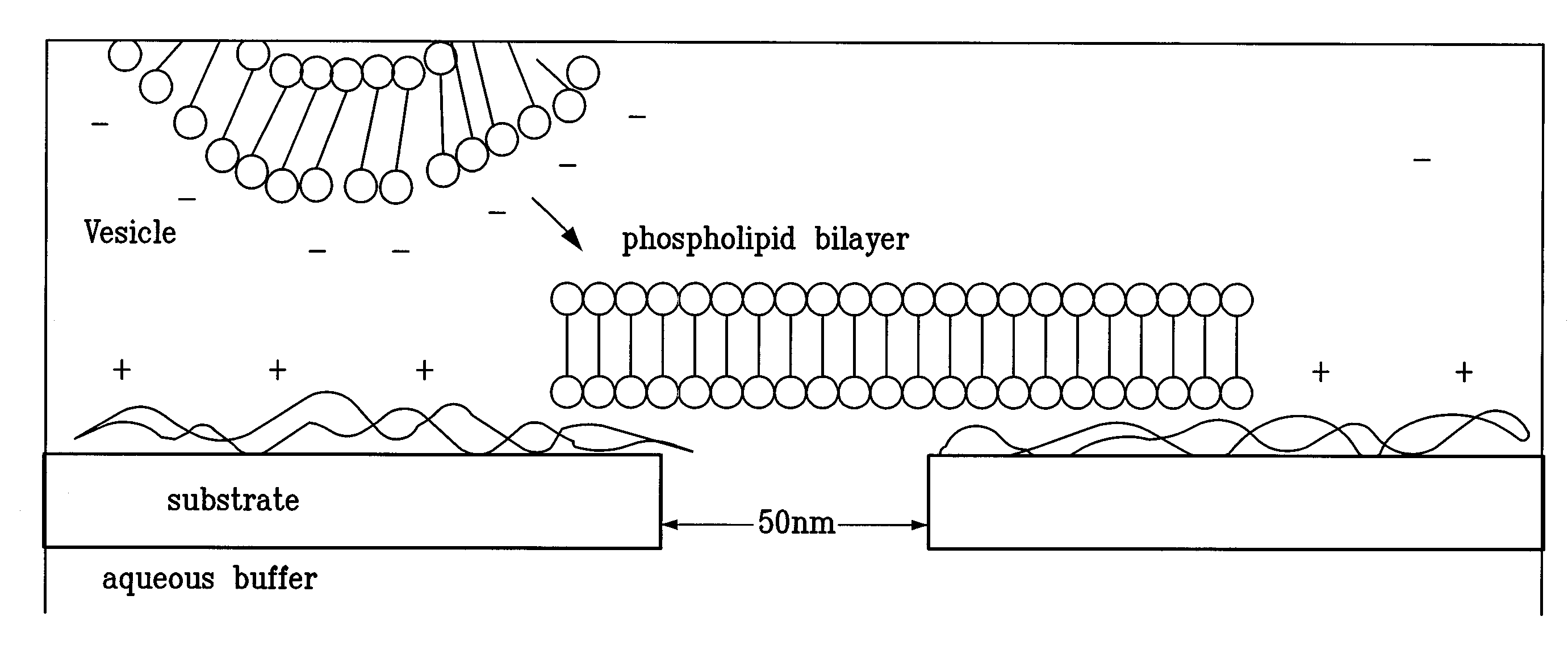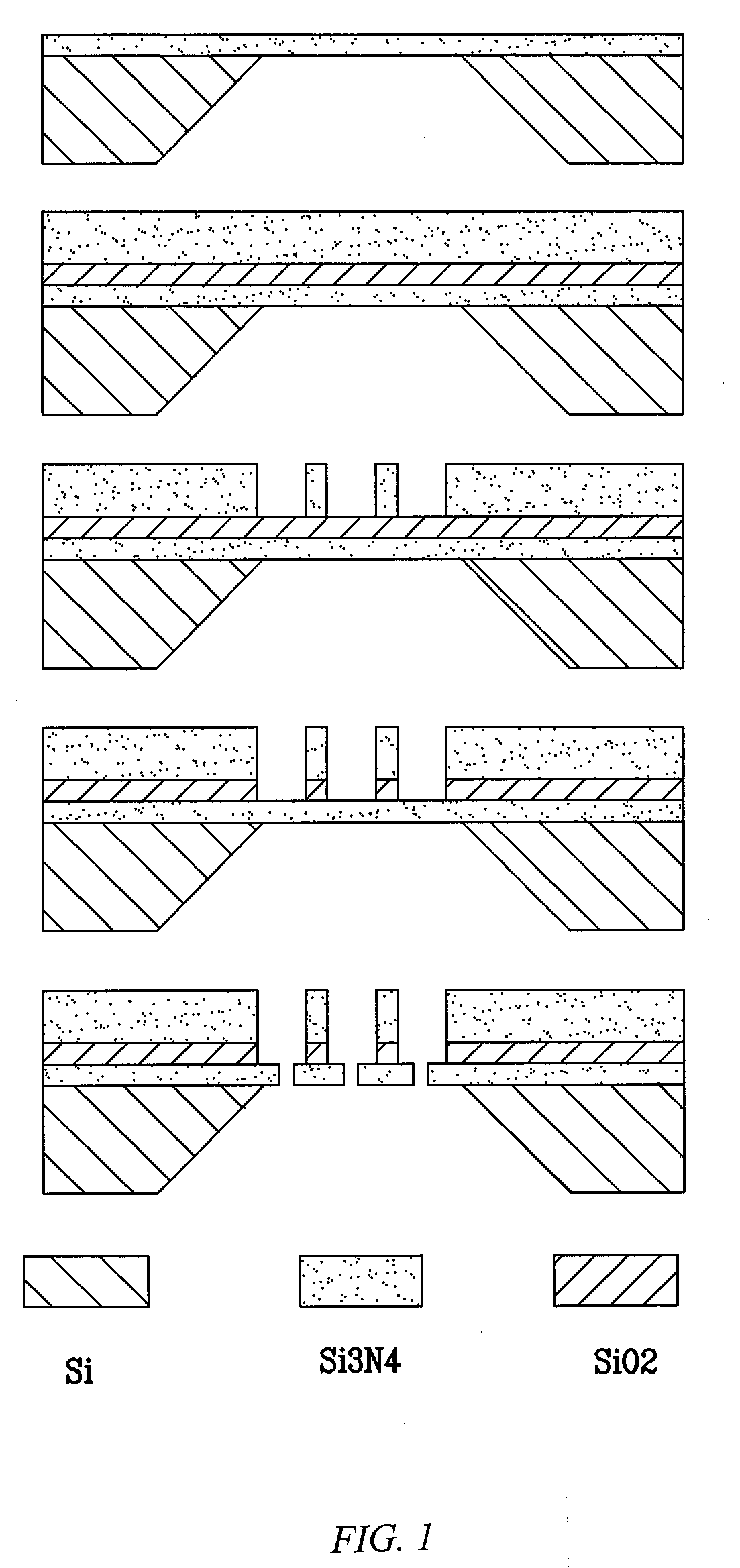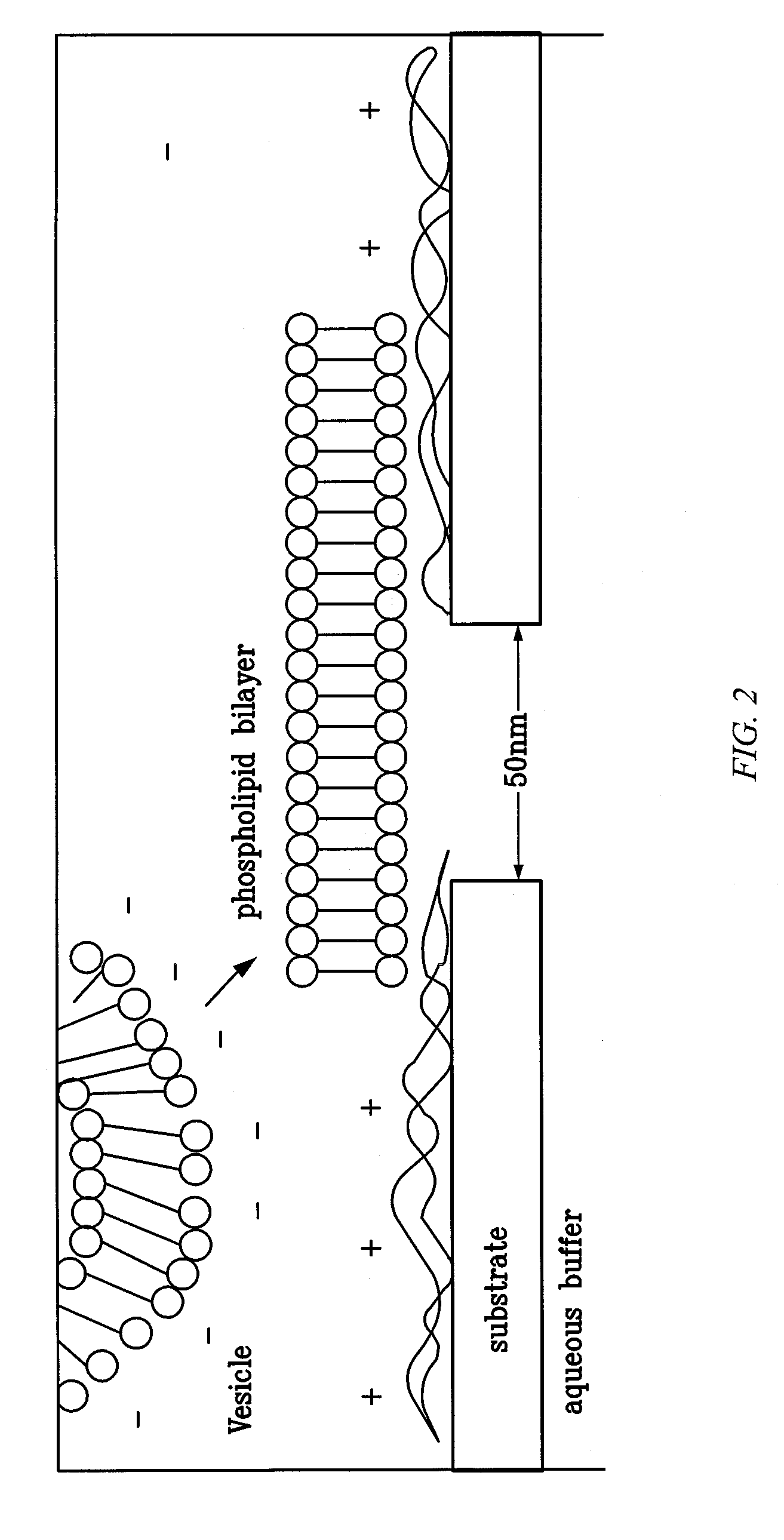Nanopore arrays and sequencing devices and methods thereof
- Summary
- Abstract
- Description
- Claims
- Application Information
AI Technical Summary
Benefits of technology
Problems solved by technology
Method used
Image
Examples
example 1
[0100]Solid-state nanopores were fabricated; all fabrications started with formation of a 50 nm thick DuraSiN™ silicon nitride membrane (Protochips Inc, Raleigh, N.C.). Solid-state nanopores were directly drilled by a JEOL 2010F field emission TEM.
[0101]Alignment of the electron probe involved condenser stigmation to the familiar triangle shaped beam, using a large condenser aperture; the probe seen is dominated by three-fold aberrations. The condenser lens was fully converged to crossover then slightly over focused. The resultant beam was an intense point with a triangular halo of low intensity. The remainder of the column alignment followed from normal high resolution transmission electron microscopy (“HRTEM”) alignment procedures. After the alignment of the electron probe, nanopores with characteristic cross-sectional dimensions in a range of 3-6 nm were directly drilled by an electron beam intensity of about 2.5×108 e / nm2s using a magnification of 800 K. The time for pore format...
example 2
[0103]A two-layer structure, 200 nm of SiO2 and 500 nm thick capping layer of Si3N4, was formed by plasma enhanced chemical vapor deposition (PECVD). A focused ion beam (FIB) drilled a 2 micrometer characteristic cross-sectional dimension well array in the first 500 nm thick silicon nitride layer. After this process, the silicon dioxide layer was removed by buffered oxide etch (BOE), to a 50 nm thick silicon nitride membrane for single nanometer scale pores.
[0104]An array of low-density nanopores (2×2, 3×3, and 6×6) was integrated into a monolithic silicon-based chip using scanning transmission electron microscope (STEM). The arrays were formed by patterning beam scanning without well arrays. Automated patterning of nanopores was accomplished by operating the microscope in STEM mode and directly addressing the scan coils to deflect the beam by the desired amount. This method was enabled by direct beam control through either an analytical x-ray acquisition system or dedicated electro...
example 3
[0105]FIG. 5 illustrates a comparison between the proteinaceous α-HL nanopore and a drawing of a chemically modified solid-state nanopore. In principle, both the thickness of the coating and the terminal group can be controlled, rendering this approach highly versatile. The coated nanopores are directly imaged.
[0106]Nanopores were characterized using ellipsometry, atomic force microscopy (AFM), and X-ray photoelectron spectroscopy (XPS) on model substrates, consisting of 50-nm-thick Si3N4 films evaporated by LPCVD on Si wafers.
[0107]Following drilling of the nanopores by TEM, the chips were placed in a 10×75 mm test tube and about 3 ml fresh solution of boiling piranha was added (4:7 30% H2O2: 98% H2SO4). The beaker was heated to sustain boiling for 15 min, after which the piranha solution was removed and the chip was thoroughly rinsed with Millipore water, methanol, and dried using N2 stream. The chips remained hydrophilic in ambient air for less than about 10 minutes.
[0108]Three t...
PUM
| Property | Measurement | Unit |
|---|---|---|
| Length | aaaaa | aaaaa |
| Thickness | aaaaa | aaaaa |
| Thickness | aaaaa | aaaaa |
Abstract
Description
Claims
Application Information
 Login to View More
Login to View More - R&D
- Intellectual Property
- Life Sciences
- Materials
- Tech Scout
- Unparalleled Data Quality
- Higher Quality Content
- 60% Fewer Hallucinations
Browse by: Latest US Patents, China's latest patents, Technical Efficacy Thesaurus, Application Domain, Technology Topic, Popular Technical Reports.
© 2025 PatSnap. All rights reserved.Legal|Privacy policy|Modern Slavery Act Transparency Statement|Sitemap|About US| Contact US: help@patsnap.com



